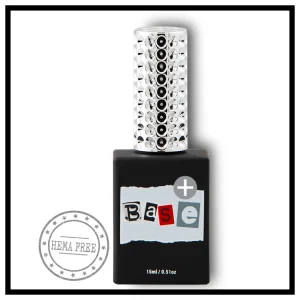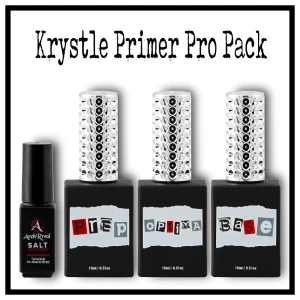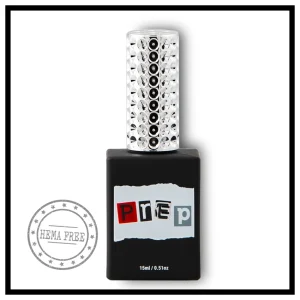Acid-based UV primer—no HEMA, no MEK, no guessing. Cures under lamp for a watertight bond that prevents lifting without over-filing. Thin coat, strong hold, zero drama.
$18.95
NOT FOR USE ON CHILDREN, PROFESSIONAL USE ONLY
The Biggest Scam? Making You Fear Acid Primer.
They Lied for Profit—And You Paid the Price The industry didn’t just mislead you—they sold you fear to push weaker alternatives. Here’s what it cost professionals in time, money, and lasting results.
Acid primer minimizes damage while delivering stronger, longer-lasting adhesion. It works by chemically etching the nail plate, creating microscopic channels that enhancement products can securely hook into. This controlled adhesion method streamlines application by eliminating unnecessary etching, ultimately supporting long-term nail health.
The Bottom Line: Nail techs who understand adhesion know that a better bond means fewer problems, healthier nails, and longer-lasting enhancements.
The Industry Lied. We’re Setting the Record Straight.
Sources: (onlinelibrary.wiley.com) (schoonscientific.com) ( healthynailscollaborative.com)
| Feature | Acid Primer | Non-Acid Air Dry Primer |
|---|---|---|
| Adhesion Strength | Strongest, grips nail directly | Weaker, acts as a bonding agent |
| Risk of Overuse | Possible skin irritation if misused | Lower risk, but requires more prep |
| Nail Preparation | Minimal etching needed | Often requires more etching |
| Best For | Acrylic, hard gel, difficult clients | Soak-off gels, less problematic nails |
Because accidents happen, and we’d rather you spill a little than regret a lot. Three 4ml bottles mean less risk, better control, and no ‘oops’ moments turning into chemical burns. It’s one more way we put industry safety fir
Q1: What is acid primer for nails?
A: Acid primer is a professional nail prep that air-dries and etches microscopic channels into the nail plate. It’s the strongest nail primer for acrylics and hard gels—built to prevent lifting.
Q2: Is acid primer better than acid-free nail primer?
A: Acid primer gives a stronger, more reliable bond. Acid-free primers are weaker and work best on easy nails, but acid primer is the best choice for tough clients and long-lasting wear.
Q3: Does acid primer damage natural nails?
A: No. When used correctly—a thin coat, air-dried—it bonds product securely without damaging the nail plate. Over-filing does more harm than acid primer.
Q4: Can acid primer burn or irritate the skin?
A: Only if misused. Apply a tiny amount and keep it off the skin. Used right, acid primer is safe and effective for pros.
Q5: How do you apply acid primer for acrylic nails?
A: Use a dry brush, apply a thin layer to the nail plate, and let it air-dry. Don’t flood the nail or touch skin. One coat is enough for strong adhesion.
Q6: Why do professionals use acid primer for acrylics and hard gel?
A: Acid primer gives the strongest bond, prevents lifting, and cuts down on service issues. It’s trusted by pros for tough nails, hard gels, and any set that needs lasting hold.
st.




© 2025 Arch Rival Nails. All Rights Reserved.